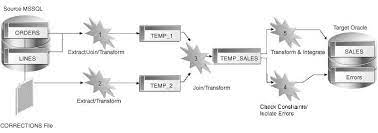Implementing effective deployment strategies in Oracle Data Integrator (ODI) ensures smooth and controlled promotion of artifacts across different environments. Here are some strategies to consider when deploying ODI artifacts:
- Environment Segregation:
- Segregate your environments based on the development lifecycle stages, such as development, testing, staging, and production.
- Create separate ODI repositories or work repositories for each environment to maintain isolation and prevent accidental changes.
- Configuration Management:
- Implement configuration management practices to manage environment-specific configurations, such as database connections, URLs, credentials, and server settings.
- Use variables or parameters in ODI to externalize configuration values and make them easily adjustable during deployment.
- Automated Deployment:
- Utilize automation tools or scripts to streamline and automate the deployment process.
- Write deployment scripts or use deployment automation tools to perform consistent, repeatable deployments across environments.
- Automate steps like importing ODI artifacts, updating configurations, and validating dependencies.
- Version Control Integration:
- Integrate your version control system (VCS), such as Git, SVN, or TFS, with ODI to manage and track changes to artifacts.
- Use version control branches to isolate development work and coordinate merges and deployments.
- Implement practices like continuous integration and continuous deployment to automate the synchronization of ODI artifacts with the VCS.
- Incremental Deployments:
- Instead of deploying the entire project or all artifacts, consider deploying only the changed or modified components.
- Identify the specific artifacts or components that have been modified and deploy them individually to minimize deployment time and reduce the risk of errors.
- Promotion and Rollback:
- Establish a controlled promotion process to move artifacts from one environment to another.
- Define approval workflows and perform testing in each environment before promoting to the next stage.
- Implement rollback strategies to revert to a previous version in case of issues or failures during deployment.
- Testing and Validation:
- Conduct thorough testing and validation of deployed artifacts in each environment.
- Perform functional testing, integration testing, and regression testing to ensure the proper functioning of ODI components.
- Validate data models, connections, and dependencies in the target environment.
- Documentation and Communication:
- Maintain comprehensive documentation of the deployment strategy, steps, and configurations.
- Communicate deployment plans, schedules, and changes to all stakeholders involved.
- Document any issues, resolutions, or lessons learned during the deployment process for future reference.
By implementing these strategies, you can ensure controlled and efficient deployment of ODI artifacts across environments, minimize risks, and maintain consistency in your development lifecycle. It’s important to adapt these strategies based on your organization’s specific requirements and best practices.
SHARE
